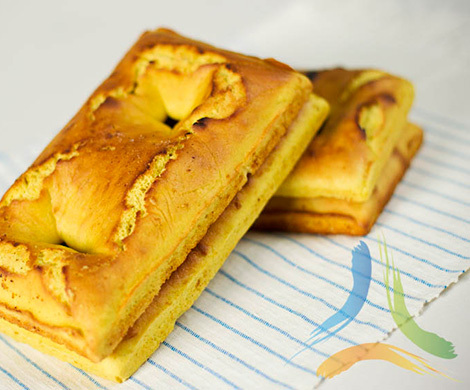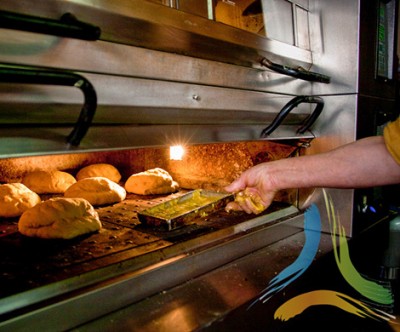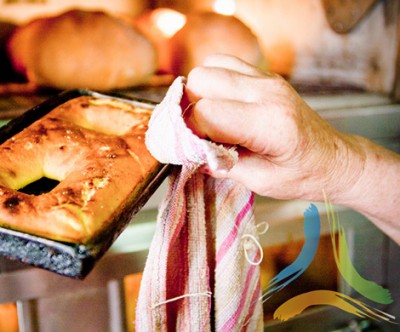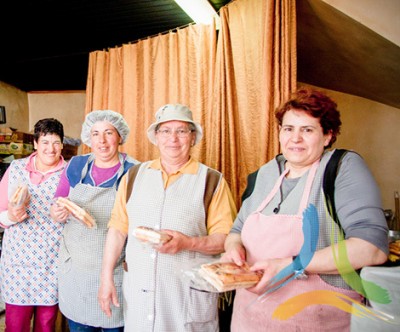The Teixeira biscuit: the companion of markets and processions
Add MyTrip




41.091610742868156
-7.802824640319841
The Teixeira biscuit: the companion of markets and processions
Ingredients in the right amount, suitable cooking times, prompt turning-out attest to years of dedication to the making of the Teixeira Biscuit, the famous sweet that is sold in markets and processions in the Douro region.Delfina Adrega...
Presentation
Ingredients in the right amount, suitable cooking times, prompt turning-out attest to years of dedication to the making of the Teixeira Biscuit, the famous sweet that is sold in markets and processions in the Douro region.
Delfina Adrega, 70, smiles when she shares her links to this gastronomic treat. “I was taught by a neighbour. I learned and then I took it up some 40 years ago.”
Named after one of the parishes of Baião, the Teixeira biscuit is still made in several municipalities in the Douro. Although records of its historical origin are unknown, oral testimonies point to this regional sweet being produced for at least two centuries. The recipe was passed down from generation to generation, procession to procession.
The Teixeira biscuit is also said to be associated with humble origins, given that it uses few ingredients and, as a result, is sold in popular feasts.
There are two types of Teixeira biscuit: the most common, to be found at any market in the municipality of Baião or its surroundings, and another which the Teixeira inhabitants make for special occasions, called “fine biscuit”. The latter contains a small amount of water to prevent it from becoming too moist and soaked a sweet. The cooking method is also different and, if not properly controlled, the sweet could remain uncooked inside.
Traditional recipes
If it is true that "a sweet is never bitter," the Teixeira biscuit will belie this with a few bittersweet pinches from lemon. The preparation may contain eggs or not, keeping the remaining ingredients: a lot of lemon (juice and zest), flour, sugar, salt and "a secret that is the soul of business." "The yellow Teixeira biscuit has a little egg and cinnamon. The white doesn’t", she reveals.
Delfina's hands knead the dough that will be divided into the individual stainless steel moulds that give the sweet its rectangular shape. Accustomed to the comings and goings of the blackened tins, she rolls the dough into two squares, making a figure of 8.
The method of preparation of the biscuit is almost intuitive, the result of many years of sweetening the mouths of those who visit Lamego and others. "I knead it in this trough and then stretch it over the cans that go in the oven for a quarter of an hour. The dough can stand from one day to another or can also be used immediately," she explains. After baking at 380°, the biscuits go to the bench to be bagged.
Popular biscuit at the feasts
Inside the oven, the yellowy and whitish (those that don’t have egg) biscuits about 18cm long and 10 wide can be glimpsed at. They are sweets of a compact consistency and an intense lemon flavour.
Over time, the biscuit maker has been forced to reduce the amount of production. "When I was young, they sold well. Now, I make fewer, because I don’t go to the festivals any longer, just to the avenue to sell there to those who want them. "The amount varies between 15kg of flour approximately and half that amount.
This sweet is an essential fixture of regional fairs, religious festivals and pilgrimages across the Douro region, so much so that someone who shows up everywhere is compared with the equally ubiquitous Teixeira biscuit.
In just one day, Delfina makes 150 cans, as she affectionately calls the moulds. The biscuits keep for up to 15 days of their production, even at room temperature.
The Teixeira biscuit "is eaten all year round." "It can accompany some tea," Delfina suggests, but it is also usual for it to be eaten with white wine during the feasts. The price listed is for two biscuits, at 1.25 euros, or for four, at 2.5 euros.
Still sought after by some tourists, the biscuit is complimented for its taste. "I eat them a lot at the feast of Nossa Senhora dos Remédios [in Lamego] and at Easter," Delfina concludes.
Text: Patricia Posse | Daniel Faiões
Schedules/Prices
Contacts
Owner/Responsible
Delfina Adrega
Delfina Adrega
Address
Rua da Ponte, n.º 56
5100 Lamego
Other points of sale:
Street vending in Avenida Dr. Alfredo de Sousa, in Lamego, on Thursdays and during week-ends
Rua da Ponte, n.º 56
5100 Lamego
Other points of sale:
Street vending in Avenida Dr. Alfredo de Sousa, in Lamego, on Thursdays and during week-ends
Latitude
41.091610742868156
41.091610742868156
Longitude
-7.802824640319841
-7.802824640319841












